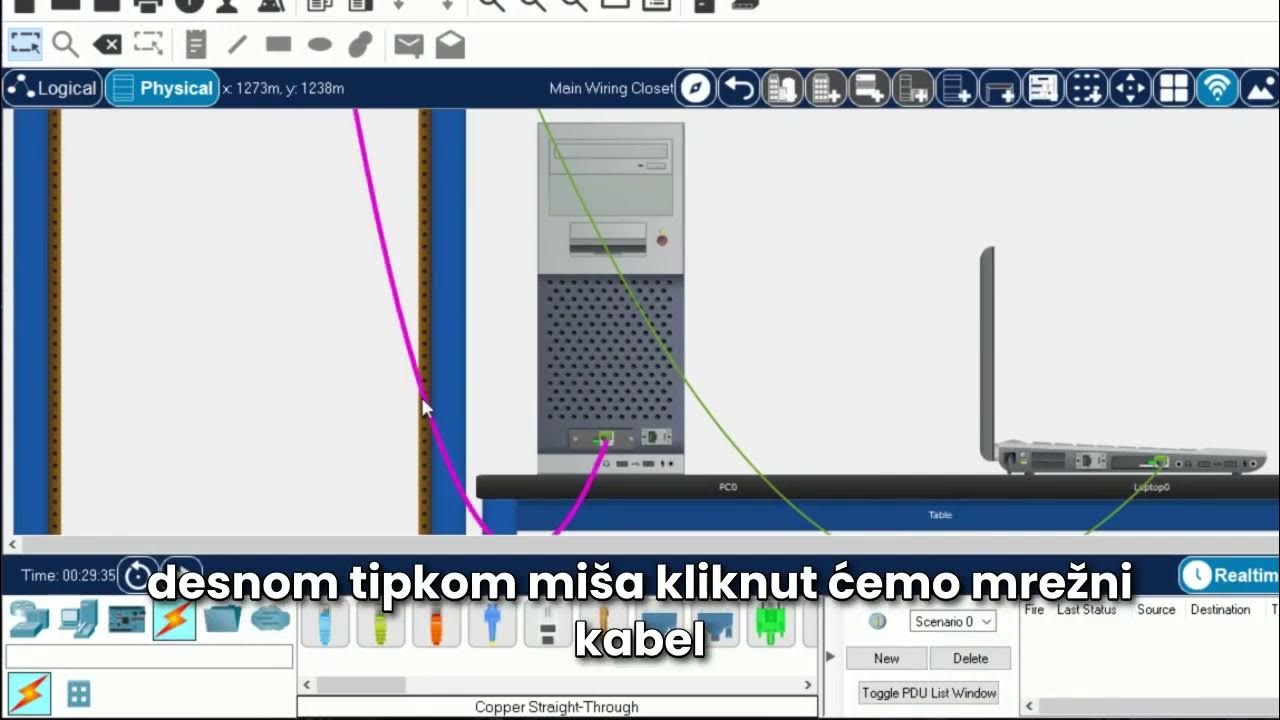Network Basics - Know Your Cable Types
Summary
TLDRIn this video, Kevin Wallace covers different types of copper network cabling essential for the CompTIA Network+ and Cisco CCNA exams. Key topics include twisted pair cabling (shielded and unshielded), plenum-rated cables, coaxial cables, and twinaxial cables, commonly used in data centers. The video discusses electromagnetic interference (EMI), cable shielding, impedance, and the speed and distance limitations of various cabling standards like Category 5, 6, 7, and 8 cables. Wallace also explains when to use different cables and offers a free book on gaining hands-on Cisco experience.
Takeaways
- 📚 The video covers key types of network copper cabling, which are important for CompTIA Network+ and Cisco CCNA exams.
- 🔌 Different types of twisted pair cabling, such as shielded twisted pair (STP) and unshielded twisted pair (UTP), are explained.
- 📡 Coaxial cable is discussed, with emphasis on its use of insulation to prevent electromagnetic interference (EMI).
- ⚡ Electromagnetic interference (EMI) is reduced by shielding or twisting wires, and it's a major concern in networking.
- 🛡️ Twin axial cables are introduced as a high-speed solution for data centers, commonly running at 40 Gbps or 100 Gbps over short distances.
- 📏 The video includes a table with twisted pair standards, their maximum speeds, and distance limitations, focusing on categories like Cat 5, Cat 6, and Cat 7.
- 🏠 Coaxial cables in homes are typically 75-ohm cables (like RG-59 or RG-6), used for TV or cable internet connections.
- 🔥 Plenum-rated cables are discussed for use in HVAC environments, where standard cables may release toxic fumes in case of fire.
- 🔧 Different Ethernet standards, such as 10Base-2 (ThinNet) and 10Base-5 (ThickNet), were mentioned as legacy coaxial technologies.
- 📈 Category 6A and higher twisted pair cables support up to 10 Gbps speeds over 100 meters, with shorter limits for some categories like Cat 8 (25G/40G Base-T).
Q & A
What are the two main types of copper network cabling discussed in the video?
-The two main types of copper network cabling discussed are coaxial cable and twisted pair cable.
How does coaxial cable help prevent electromagnetic interference (EMI)?
-Coaxial cable prevents EMI by having two conductors: an inner wire and an outer metal braiding. The design ensures the outer conductor shields the inner conductor, preventing interference from external signals.
What are the two primary impedances of coaxial cable, and where are they commonly used?
-The two primary impedances are 75 ohms and 50 ohms. 75 ohms is typically used for cable TV and modems (e.g., RG59 or RG6 cables), while 50 ohms was used in early Ethernet networks (e.g., RG58 for 10Base2 and RG8 for 10Base5).
What is twin axial cable, and where is it typically used?
-Twin axial cable is a newer type of cable with two inner conductors on separate axes. It is commonly used in data centers for short runs (up to 7 meters) to connect components at speeds of 40 Gbps or 100 Gbps.
What are the differences between shielded twisted pair (STP) and unshielded twisted pair (UTP) cables?
-Unshielded twisted pair (UTP) relies on twisting the pairs of wires to reduce EMI, while shielded twisted pair (STP) includes additional shielding (like foil or braiding) around the wires to offer better EMI protection, especially at higher speeds.
What is plenum-rated cabling, and when should it be used?
-Plenum-rated cabling is a type of cable with insulation that does not release toxic fumes when exposed to extreme heat. It should be used in plenum areas, such as spaces used for HVAC systems, to prevent harmful fumes in case of fire.
What are the typical uses for Category 3 cabling?
-Category 3 cabling was commonly used in early PBX phone systems and early networking technologies, such as 10Base-T Ethernet, which supported speeds up to 10 Mbps.
What are the differences between Category 5 and Category 5e cables?
-Both Category 5 and Category 5e cables can support up to 1 Gbps speeds (1000Base-T), but Category 5e has better electrical characteristics, reducing crosstalk and making it more reliable for higher-speed networks.
What is the distance limitation for 10Gbps Ethernet over Category 6 cabling?
-The distance limitation for 10Gbps Ethernet (10GBase-T) over Category 6 cabling is 55 meters.
What is the main purpose of Category 8 cable, and where is it typically used?
-Category 8 cable is designed for data centers and supports 25GBase-T and 40GBase-T connections. Its distance limitation is around 30 to 36 meters, making it unsuitable for general building infrastructure but ideal for short data center runs.
Outlines

Cette section est réservée aux utilisateurs payants. Améliorez votre compte pour accéder à cette section.
Améliorer maintenantMindmap

Cette section est réservée aux utilisateurs payants. Améliorez votre compte pour accéder à cette section.
Améliorer maintenantKeywords

Cette section est réservée aux utilisateurs payants. Améliorez votre compte pour accéder à cette section.
Améliorer maintenantHighlights

Cette section est réservée aux utilisateurs payants. Améliorez votre compte pour accéder à cette section.
Améliorer maintenantTranscripts

Cette section est réservée aux utilisateurs payants. Améliorez votre compte pour accéder à cette section.
Améliorer maintenantVoir Plus de Vidéos Connexes

Cisco Packet Tracer | Everything You Need to Know

Belajar Cisco untuk pemula - Part 1/5 | Introduction

Belajar Jaringan Komputer - Intro | Network Fundamental Learning Series #1

LAN, MAN, WAN, PAN , CAN | Computer Networks

Početak rada u Cisco Packet Traceru HR

Free CCNA | Network Devices | Day 1 | CCNA 200-301 Complete Course
5.0 / 5 (0 votes)
